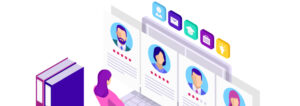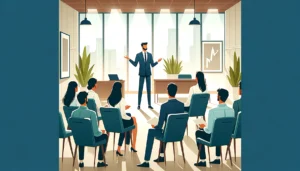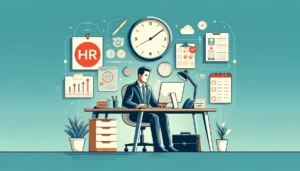HRD Roundtable Report: How Can We Embrace Change & the Future of Work?
- 8 Min Read
How Can We Embrace Change & the Future of Work? The future of work is constantly evolving, and it is impossible to have all the answers. How then, can HR teams adapt themselves and their businesses to not just cope but thrive? We need to re-evaluate the core parts of organisations so they can function […]
- Event Types
- Date of Event: Mar 3, 2022


How Can We Embrace Change & the Future of Work?
The future of work is constantly evolving, and it is impossible to have all the answers. How then, can HR teams adapt themselves and their businesses to not just cope but thrive? We need to re-evaluate the core parts of organisations so they can function in flexible and adaptable ways and meet the challenges of emerging trends such as hybrid working,
Led by Dawn Moore, Group People and Communications Director, Murphy Group, and supported by further insights from Richard Doherty, Senior Director Product Marketing EMEA at Workday, this discussion was conducted under Chatham House Rules. This report will contain the key takeaways, and all participants will be anonymised
” It was a pleasure to chair the roundtable on The Future of Work last month with contributions from so many HR colleagues. There have clearly been many learnings from the last couple of years that will be a permanent feature of our workplaces going forwards. Interestingly however, it is clear that there is not a one size fits all when it comes to the Future of Work. Considering diversity of the workforce is key and ensuring that working principles are championed (and wherever possible role modelled) by the C Suite is key to any benefits being sustainable. I hope you enjoy the summary of the key takeaways from this varied discussion” Dawn Moore, Group People and Communications Director, Murphy Group.
What are the next big trends? What should we prepare for?
We can’t predict the future, but we can examine the trends that are emerging to help us better prepare.
As we continue to emerge from the pandemic, organisations need a balance between finding stability in the ‘new normal’ and being future and opportunity focussed. For some, digitisation will be key. One participant shared their challenge both staying ahead in a competitive landscape that has changed (with many digital first businesses having popped up over the pandemic) as well as maintaining a strong culture for their people in a more digital and remote world.
Developing new capabilities was also a common trend, again affected by new models and digitisation of roles. For example, how can we support our salespeople better, now that they aren’t always out engaging face to face? Do they have the digital/hybrid selling skills that we need? What does the transition look like? Organisations need to start thinking about which roles and skills are still needed, and how we can retrain and move people around, to avoid redundancies and close skills gaps.
Some organisations have found that their people are very willing to explore these new skills, out of understood necessity. Job agility can be possible, if we give people the tools. One participant described their organisation’s approach of developing a secondary role for each customer facing person. This means that as customer facing roles diminish, they will have other options to pivot to. They have tried to implement reskilling as a cultural focus, especially for the leadership team, based around always looking for internal growth instead of hiring to fill gaps. And this is working – they gave a great example of a leader from the growing technology side of the business offering to take on and train up customer facing staff from a part of the business that was downsizing. Without this attitude, it would have been difficult to keep the customer facing staff within the business.
Talent acquisition is also a challenge at the moment. Even organisations that have traditionally been desirable, are finding it more challenging to get new talent interested and invested. For some industries, especially those that involve production lines etc., there are limits to how much they can ‘flex’ their capability and headcount and continue to meet real demand. They’re looking at alternative methods, like offering apprenticeships and certified trainings – can we develop the people and skills that we need ourselves, rather than searching for existing skills?
Evolving the hybrid conversation
A universal challenge was understanding and managing opportunities for hybrid working. We saw this particularly starkly in industries and organisations where there is more than one type of employee, e.g. frontline and office staff. In these kinds of organisations, even with other ‘perks’ such as onsite gyms and restaurants, the lack of flexibility can make it seem like only ‘management’ get options, with an adverse effect on engagement. The challenge here is how to connect with and incentivise this part of the workforce, particularly when other colleagues may have other options. What can we offer them that is different?
The group discussed various approaches and some areas of success. One participant for example has found value in educating managers on what different kinds of agility and flexibility can look like and empowering them to make decisions for their teams where they can. Many people, even in frontline positions are already practicing a version of flexibility without realising – whether that’s starting and finishing early, or only taking shifts that don’t interfere with childcare, or being able to take on extra hours when they need an income boost.
Another participant discussed the opposite end of the spectrum – they have historically had a very flexible and diverse workforce, as they mostly work independently. Now the issue is in finding compelling reasons for them to come back to the office at all. How can we update the workplace to make it appealing?
What are the C-level priorities? What role does leadership play?
Who and how we choose to lead can truly have major impacts on how people engage with the business. Ensuring that leadership and C-level and HR priorities are aligned is key.
Authentic care and focussing on wellbeing were top of the list across the group. As we ‘emerge from covid’ retention is proving more valuable that recruiting because the market is so competitive. Wellbeing can be a powerful tool here, and showing people that you are authentic in care, through cultural and process change has a big impact. For example, are we running meetings at times and in ways that are respectful of other schedules? Are we giving people the tools and power to prioritise their work and experience as individuals?
What initiatives are working at the moment? One participant shared how their CEO now does a ‘Monday musing’, a way of checking in with the business and giving a window into their focus for the week – building connection and creating transparency. We heard the idea of ‘clear your plate days’, where no meetings are scheduled, and everyone can focus in on just work. The group also discussed offering additional rest days, but with a set purpose of being for joy and fun. How employees spend that day is down to them but marking it as a positive purpose day encourage employees to use it and associate it with happiness.
Coming back again to organisations with frontline and office staff, how do we create a balance in experience why still maintaining service? Here again the role of the manger is key in the relationship. One HR leader shared how they have changed the language around ‘flexibility’ and ‘going back to the office’ – if your managers go into conversations making comparisons and apologetic about what they can’t offer, it will never feel like a productive conversation. They’ve switched the focus to be on the future of work more generally, and what that could be for individual roles – working smarter, focussing on wellbeing, travelling smarter etc.
We also heard examples of authentic care in the form of employee funds. One organisation was able to give every employee a small bonus last year – only a token amount but to show their appreciation. Other organisations have invested in creating pots the employees can apply for support from when they are facing an unexpected challenge in their personal lives and need an extra boost. This way they have a system in place to help their people in really tangible ways, when they need it most.
Technology and the Future of Work
How can technology support these aims and priorities? Technology can create the huge opportunity to meet people where they are – particularly if they are part of the workforce without continuous access to a computer or email address.
Connectedness –> Engagement –> Retention
Mobile first can be a great implementation starting point, but we also need to think about how we listen and gather data about our people. What do they want, how do they interact with us? What would they find valuable?
The group discussed the great point that we often talk about technology as something separate and additional. In truth, technology is something we all use every day and is already a part of our jobs. HRDs have the opportunity to evolve our use of technology further to truly improve the ways we work. If we can embed expectations around technology (including how requirements might change!) into our organisations, we can build a real competitive advantage.
This was part of a three-part roundtable series will bring together senior HR leaders to discuss the most pertinent issues currently facing the HR function, identify opportunities and allow you to learn from the experience of your peers. Find out more information about each session here: Workday HRD Roundtable Series 2022 (hrdconnect.com)







